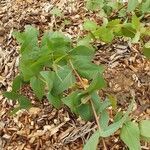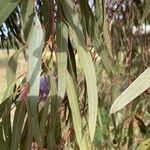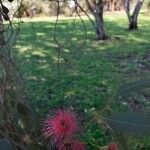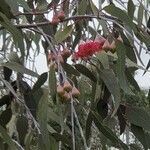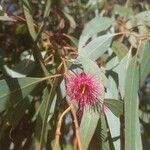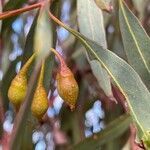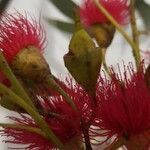Tree to 16 m with grey to dark grey rough fibrous bark for 2 m then white, grey, yellow and/or blue smooth bark on remainder.. Juvenile leaves sessile, ovate to broadly lanceolate; adult lanceolate, 9–13 cm long, 1.3–2.5 cm wide; petiole 1–2 cm long.. Umbels 3-flowered; peduncle terete, 4–11[14] mm long; pedicels 0.3–2.5 cm long.. Buds ovoid to fusiform, rostrate; operculum 4–5 mm long, 5–6 mm wide.. Calyx-tube 5–7 mm long, 6–7 mm wide.. Fruits pendulous, ovoid to subglobose, 0.7–1.4 cm long, 0.8–1.3 cm wide with dark caducous staminal ring and 4–6 included valves.. Fig. 7/19.
A tree.

